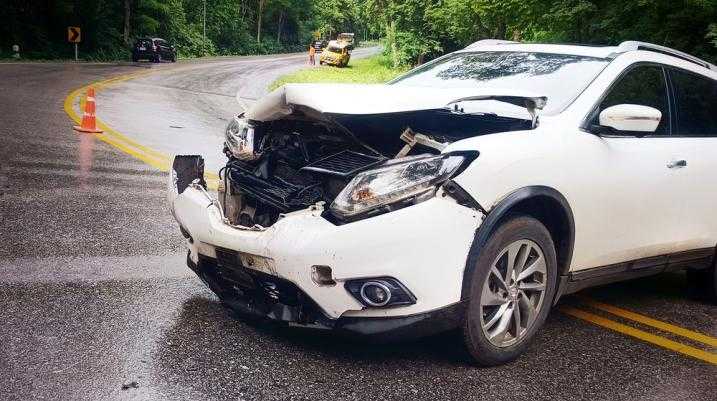How to Sue Someone for Car Damages: A Step-by-Step Guide

Car accidents can leave you with costly damages, both to your vehicle and to your finances. If the at-fault driver refuses to pay for the damages or their insurance is insufficient, you may need to take legal action.
This guide will walk you through the process of suing someone for car damages, outlining the necessary steps, legal considerations, and potential outcomes.
While this guide can help you to be informed about your options, working with an experienced car accident attorney can help maximize your chances of getting the compensation you deserve. Morgan & Morgan, America’s largest personal injury law firm, can help. Find out more with a free case evaluation today. It’s simple, free, and with no obligation.
Step 1: Assess the Situation
Before deciding to sue, evaluate the circumstances of the accident. Consider the following:
- Who was at fault? Establishing liability is crucial.
- What are the damages? Include vehicle repairs, medical expenses, lost wages, and other related costs.
- What does insurance cover? Check if the at-fault driver’s insurance or your own policy can cover the expenses.
If the insurance company denies your claim or offers an inadequate settlement, legal action may be necessary.
Step 2: Gather Evidence
Strong evidence will support your claim and increase your chances of winning in court. Essential evidence includes:
- Police Report: If law enforcement responded to the accident, obtain a copy of their report.
- Photos and Videos: Capture damage to all vehicles involved, skid marks, road conditions, and traffic signals.
- Medical Records: If you sustained injuries, keep medical bills and records.
- Witness Statements: Collect contact information and statements from any witnesses.
- Repair Estimates: Get written repair estimates from auto shops.
Step 3: Contact the At-Fault Party and Their Insurance
Before proceeding with a lawsuit, attempt to resolve the issue with the at-fault party or their insurance provider. You can send a formal demand letter outlining:
- A summary of the accident
- The total damages incurred
- A request for a specific amount in compensation
- A deadline for their response (usually 30 days)
If the other party refuses to cooperate or denies responsibility, legal action may be necessary.
Step 4: Determine Where to File the Lawsuit
The type of court you file in depends on the amount of damages:
- Small Claims Court: If damages are within your state's small claims limit (usually $5,000–$10,000), you can represent yourself and avoid legal fees.
- Civil Court: For larger claims, filing in a civil court may be necessary, and hiring an attorney is advisable.
Step 5: File a Complaint
To officially sue, you must file a complaint with the appropriate court. The complaint should include:
- Your name and contact information
- The defendant’s name and contact information
- A description of the accident and damages
- The amount of compensation sought
- Supporting evidence
After filing, you must serve the complaint to the defendant, following the court’s rules for legal notification.
Step 6: Prepare for Court
If the defendant does not settle, the case will proceed to court. Preparation involves:
- Reviewing evidence: Organize all documentation, including accident reports, photos, medical bills, and witness statements.
- Understanding traffic laws: Know the legal basis for your claim.
- Practicing testimony: Be prepared to explain your case clearly and concisely.
- Hiring an attorney: A personal injury attorney can significantly improve your chances of success.
Step 7: Attend Mediation or Trial
Before trial, the court may require mediation, where a neutral mediator tries to help both parties reach a settlement. If mediation fails, the case proceeds to trial, where:
- Both sides present evidence
- Witnesses may testify
- A judge (or jury) makes a ruling
Step 8: Collect Your Judgment
If you win the lawsuit, the court will order the defendant to pay damages. However, collection can be challenging if the defendant refuses to pay. Possible options include:
- Wage Garnishment: A portion of their paycheck is withheld.
- Property Liens: A claim against their assets.
- Bank Levies: Freezing and withdrawing funds from their account.
No Matter What Situation, Morgan & Morgan Can Help
Suing for car damages is a complex process, but with proper evidence and legal guidance, you can seek fair compensation. If you’re unsure about handling the case yourself, consulting a Morgan & Morgan attorney can help you navigate the legal system and maximize your chances of success.
Hiring one of our attorneys is easy, and you can get started in minutes with a free case evaluation.
Frequently Asked Questions
Can I Sue the Other Driver for Car Damage if I Have PIP Insurance?
In most cases, you can. But you must first file a claim with your insurance insurer under your PIP insurance. Then, if the damages are worth more than what your insurance covers per your policy, you may file a claim with the other driver’s insurance provider to compensate you for the remaining amount.
Is a Lawsuit Usually the Best Option to Recover Damages?
Not necessarily. It all depends on the specifics of your case. For instance, if you file a claim with the other party and they agree to settle or even negotiate a reasonable settlement out of court, filing a lawsuit might not be necessary. On the other hand, you may need to file a lawsuit if the other party:
- Refuses to cooperate in out-of-court settlement negotiations;
- accuses you of causing the damages;
- undervalues your claim; or
- proposes a lowball offer and sticks to it.
What Damages Can I Recover if I Win?
The damages you may be able to recover will depend on the specifics of your case. For this reason, it is always advisable to involve an experienced car accident attorney.
That said, you may be able to obtain compensation for the time you spent pursuing the case. This includes attorney fees, the wages you lost, and more.
The Auto Repair Shop Found More Damages to My Vehicle Than What the Insurance Adjuster Had Noted. Can the Insurance Provider Compensate Me for That?
Yes, the insurance provider should be able to compensate you for such damages. Unfortunately, this is one of the many tactics some insurance companies use to avoid paying what they owe.
Remember that insurance is a business like any other. They aim to minimize their expenses and increase their premiums. That is why some rogue insurance companies undervalue claims by intentionally excluding damages they know the claimant is entitled to.
If you ever find yourself in such a situation, an experienced car accident attorney might be able to fight for you. Such an attorney knows the tactics insurance companies use to avoid paying what they owe.
What Other Tactics Do Insurance Companies Use to Avoid Liability?
Another common tactic insurance companies use to avoid liability is to rush you into a settlement offer.
This is because the injured are usually in shock the first few hours after the incident and unable to think straight. While insurance companies might seem caring when they contact you shortly after an accident, there is always a hidden motive.
These companies usually hope that they can convince you to sign a settlement before you get a chance to hire a lawyer. They also do this hoping that you have not yet seen a doctor after the accident, meaning they can avoid paying your medical expenses if you accept a quick settlement.
The Insurance Provider Wants Me to Sign a Quick Document. Should I?
It is never advisable to sign any document from insurance companies, especially without an attorney. This is because these documents usually contain complex legal jargon you may not be familiar with. But you should not expect the insurance company to reveal every detail you need to know before signing. Instead, they will want you to sign the paperwork quickly before you realize the importance of hiring an attorney.
Before you sign, contact Morgan & Morgan for free.
Injured? Getting the compensation you deserve starts here.
